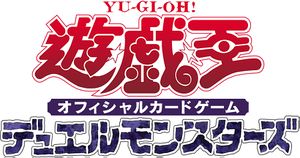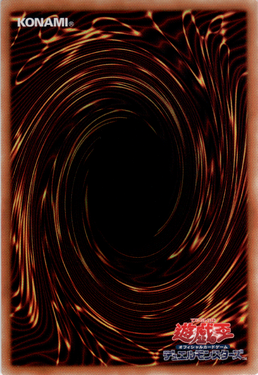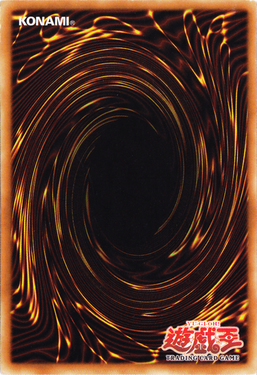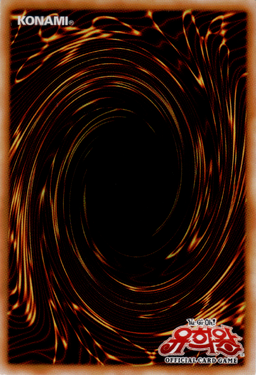Yu-Gi-Oh! Official Card Game
| Wikipedia has a page about Yu-Gi-Oh! Trading Card Game. |
The Yu-Gi-Oh! Official Card Game is the version of the Yu-Gi-Oh! card game for Eastern Asia. The equivalent game outside of Asia is the Yu-Gi-Oh! Trading Card Game (TCG).
It was first released in February 1999, with the release of Vol.1 in Japan.
OCG products are advertised as suitable for 9-years-old children or older (in contrast to the TCG's 6+, and it used to be 12+ until 2015), and tournaments are divided into three age brackets: Expert, which has no age restriction, Regular, for high school students, and Challenge, for junior high school students.
Contents
Regions and languages[edit]
The OCG is played mainly in Japan and South Korea, but also in China, Hong Kong, Indonesia, Malaysia, Philippines, Singapore, Taiwan, and Thailand. It was printed exclusively in Japanese and Korean for most of its history, but is also currently printed in English (referred to as Asian-English) and Simplified Chinese, and has been previously printed in Traditional Chinese for a brief period.[1]
Japanese cards used to be distributed in all OCG territories, though this has since ceased and are now only sold in Japan, by Konami of Japan. These Japanese cards distributed outside Japan were referred to as "Japanese-Asian" prints. Asian-English, Japanese-Asian, and Traditional Chinese cards are distributed by Konami of Hong Kong. Korean and Simplified Chinese cards are distributed by Daewon Media and Shanghai Windo Entertainment Co. Ltd respectively.
Even though they are part of the OCG, Korean cards (as well as Asian-English ones before 2023) use the edited artworks made for the TCG.
Card backing[edit]
Unlike TCG cards, which all use the same logo, different regions of OCG cards have different logos on their card backings.
- Japanese and Japanese-Asian card backs have a logo containing the Japanese Yu-Gi-Oh! logo (with English Ruby text) and the text Official Card Game Duel Monsters in katakana.
- Korean card backs have a Korean Yu-Gi-Oh! logo (with English Ruby text) and the text Official Card Game in English.
- Asian-English card backs have a Japanese Yu-Gi-Oh! logo (with English Ruby text) and the text Trading Card Game in English (despite being part of the OCG and not the TCG).
Card legality[edit]
TCG cards are not legal in OCG tournaments. Due to Japanese, Asian-English, and Korean cards having different backings, if a player chooses to use a mix, they must use sleeves with an opaque reverse side to cover the backings.
Since September 2013, the OCG and TCG have had different banlists, with multiple cards being Forbidden in one list but Unlimited in the other (in both directions).
Rule revisions[edit]
Official Rules[edit]
Official Rules (公式ルール Kōshiki Rūru) were introduced with Vol.1 and were adjusted with the release of Starter Box: Theatrical Release and Vol.7. They remained in effect as the rule set until the Official Guide Starter Book was released on May 5, 1999, but were kept an alternative format until the end of Series 1.
Differences from later formats are:
- Draw Phase is not conducted on the first turn
- There is no Tribute Summon, and all monsters can be Normal Summoned without Tributes
- Only 1 Spell or Trap Card can be activated/Set per turn
- Trap Cards remain on the field after activation, unless its effect specifies it destroys itself
- Only 10 cards may be in the Side Deck
- There is no hand size limit
- If it ends with 1 Win and 2 DRAWs, the Match itself is in a DRAW
- Only 1 player can control a Field Spell Card
- Fusion Summons can only be done with Fusion Materials on the field
- If agreed upon beforehand, cards and/or Star Chips can be bet and won during Duels
- If a Fusion Monster would be returned to the hand, it actually does so before being put back in the Fusion Deck
- Quick Effects cannot be activated from the hand (i.e. Kuriboh)
Expert Rules[edit]
Expert Rules (エキスパートルール Ekisupāto Rūru) were introduced in the Official Guide Starter Book and were in effect until the end of Series 1.
Changes from Official Rules:
- Introduction of Tributing and Tribute Summons (as "Sacrificing" and "Sacrifice Summon" respectively)
- Removal of the limit on number of Spell and Trap Cards that can be played each turn
- Fusion Materials can be used from the hand
- Quick Effects can be activated from the hand
- Introduction of Flip monsters and Effect Monsters
New Expert Rules[edit]
The New Expert Rules were in effect from the start of Series 2 to the end of Series 5.
Changes:
- Introduction of the Deck out rule
- Introduction of the hand size limit
- Side Deck size changed from 10 to 15
- Scoring 1 win and 2 DRAWs in a Match results in a win
- Introduction of Continuous and Quick-Play Spell Cards
- Introduction of Trap Card types: Normal, Continuous, and Counter
- As a part of this change, Normal Trap Cards no longer destroy themselves as a part of their effect
- Introduction of Spell Speed
- Introduction of Special Summoning
- This term was originally used to refer to the likes of "Mystic Tomato" Summoning from the Deck, but the term was enlargened to include Graveyard revival by The Thousand Rule Bible and would be applied to all Summons that are not Normal or Flip.
- Introduction of priority for Ignition Effects
Master Rules[edit]
The Master Rules (マスタールール Masutā Rūru) were in effect during Series 6 and the beginning of Series 7.
Changes:
- Introduction of Synchro Monsters
- "Tribute" renamed from "Sacrifice" to "Release"
- "Tribute Summon" renamed from "Sacrifice Summon" to "Advance Summon"
- "Fusion Deck" renamed to "Extra Deck"
- Main Deck size changed from 40+ to 40–60
- Extra Deck maximum size added (15)
- Side Deck size changed from strictly 0 or 15 to 0–15
Master Rules 2[edit]
The Master Rules 2 (マスタールール2 Masutā Rūru Tsū) were in effect during the end of Series 7 and during Series 8.
Changes:
- Introduction of Xyz Monsters
- Deprecation of the term "priority" in favor of Fast effect timing
Master Rules 3[edit]
The Master Rules 3 (マスタールール3 Masutā Rūru Surī) were in effect during Series 9.
Changes:
- Introduction of Pendulum Monsters
- Addition of Pendulum Zones
- Removal of the word "Card" from Zone names
- Draw Phase no longer conducted on the first turn
- Both players can control a Field Spell Card at the same time
- Incorporation of Flip effects into Trigger Effects
New Master Rules[edit]
The New Master Rules (
Changes:
- Introduction of Link Monsters
- Old Monster Zones renamed to Main Monster Zones
- Addition of Extra Monster Zones
- Monsters Summoned from the Extra Deck can only be placed in the Extra Monster Zone, or a Main Monster Zone that is being pointed to by a Link Monster
- Relocation of Pendulum Zones into the outmost Spell & Trap Zones
Master Rules (April 1, 2020 revision)[edit]
The Master Rules revision of April 1st, 2020 are the current rules in effect from Series 11 on.
Changes:
- The rule on the placement of monsters Summoned from the Extra Deck is restricted to Pendulum and Link Monsters only
- Trap Monsters no longer keep taking up a Spell & Trap Zone after activation
Names[edit]
| Language | Name | Romanization | Language code |
|---|---|---|---|
| Japanese | Yūgiō Ofisharu Kādo Gēmu Dyueru Monsutāzu | JP (formerly omitted) | |
| Yūgiō Faibu Dīzu Ofisharu Kādo Gēmu | |||
| Yūgiō Zearu Ofisharu Kādo Gēmu | |||
| Yūgiō Āku Faibu Ofisharu Kādo Gēmu | JP (Japan) and JA (other regions) | ||
| Korean | Yuhuiwang OFFICIAL CARD GAME | KR (formerly K) | |
| Yuhuiwang Paibeudijeu Opisyeol Kadeu Geim | |||
| Yuhuiwang Jeal Opisyeol Kadeu Geim | |||
| Yuhuiwang Akeu Paibeu Opisyeol Kadeu Geim | |||
| Asian-English | YU-GI-OH! TRADING CARD GAME | AE (formerly omitted) | |
| Traditional Chinese | Yóuxìwáng Zearu Gōngshì Kǎpiàn Yóuxì Jau4 hei3 wong4 Zearu Gung1 sik1 Kaat1 pin2 Jau4 hei3 |
TC | |
| Yóuxìwáng Āku Faibu Gōngshì Kǎpiàn Yóuxì Jau4 hei3 wong4 Āku Faibu Gung1 sik1 Kaat1 pin2 Jau4 hei3 | |||
| Simplified Chinese[Note 1] | 游戏王 公式卡片游戏[Note 2] 游戏王 官方卡片游戏[Note 3] |
Yóuxìwáng Gōngshì Kǎpiàn Yóuxì Yóuxìwáng Guānfāng Kǎpiàn Yóuxì |
SC |
Logos[edit]
Japanese[edit]
Korean[edit]
Asian-English[edit]
Traditional Chinese[edit]
Notes[edit]
References[edit]
- ↑ Eva (December 12, 2013). "Are You Ready for More Yu-Gi-Oh Languages?". YGOrganization.











